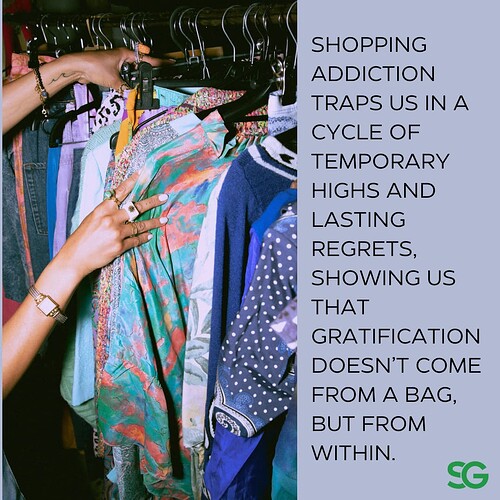Shopping addiction, also known as compulsive buying disorder, is a prevalent issue that affects a large number of people worldwide. It’s characterized by an overwhelming urge to shop and purchase items, often leading to financial, emotional, and relational difficulties. In this blog, we’ll delve into understanding shopping addiction, its symptoms, and practical strategies for managing and overcoming this challenge.
Understanding Shopping Addiction
Shopping addiction goes beyond the occasional splurge or treat or even just the fulfillment of a need. It’s a compulsive behavior that people find difficult to control. It can serve as an emotional escape for feelings of stress, anxiety, depression, or low self-esteem, providing a temporary high and a feeling of euphoria. However, this is short-lived and often followed by feelings of guilt, shame, and severe financial repercussions.
Recognizing the Symptoms
Identifying the symptoms of shopping addiction is the first step towards addressing the problem. Common signs include:
- Spending that is outside your financial means, but doing it anyway
- Shopping as a way to feel better about life
- Lying about shopping habits or hiding purchases
- Feeling a loss of control over shopping behaviors
- Experiencing a rush or a high from shopping
Strategies for Overcoming Shopping Addiction
-
Acknowledge the Problem: Recognizing that you have a shopping addiction is a crucial first step. Admitting that your shopping habits are causing harm to yourself and possibly others around you is essential for recovery.
-
Seek Professional Help: Therapy, particularly cognitive-behavioral therapy (CBT), can be highly effective in treating shopping addiction. It helps individuals identify triggers, develop healthier coping mechanisms, and change destructive patterns of thought and behavior.
-
Set Financial Limits: Establish a budget and stick to it. Use cash instead of credit cards to keep track of spending more accurately and avoid accumulating debt.
-
Identify Triggers: Understanding what triggers your desire to shop is vital. Triggers can be emotional, such as feeling sad or stressed, or situational, like being near your favorite store. Once identified, you can develop strategies to cope with these triggers in healthier ways.
-
Find Alternative Activities: Engage in activities that fulfill you emotionally and physically without involving shopping. Try to find fun and preferably free activities in your area, exercise in the park, join a book club, sign up for free yoga sessions, etc.
-
Build a Support System: Surround yourself with people who understand your struggle and support your recovery (you are already on the right path here-welcome).
-
Monitor Your Progress: Keep a journal of your shopping habits, feelings, and progress. Reflecting on your journey can provide insights into your behaviors and motivations, helping you stay on track.
Dealing with a shopping addiction requires patience, addictions take awhile to become an addiction and it will take awhile to work through the addiction. It’s a journey that involves understanding the underlying causes, recognizing triggers, and implementing practical strategies to develop healthier habits. Remember, it’s more than okay to seek help, and taking the first step towards recovery is a sign of strength. Shopping can be joyful, it can fulfill needs on your grocery list, but when it creates a mountain of debt or a mountain of items you don’t even need, it is time to get help, you can do this.
-SG
